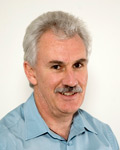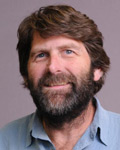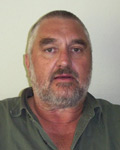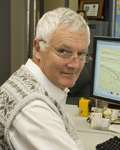Tectonostratigraphic development and hydrocarbon reservoir quality on a convergent margin: East Coast, North Island, New Zealand
Brad Field A , Jan Baur A , Kyle Bland A , Greg Browne A , Angela Griffin A , Brad Ilg A , Zoe Juniper A , Mark Lawrence A , Randall Marrett B , Scott Mildren C , Michael Milner A , Hugh Morgans A , Lucia Roncaglia A , Chris Uruski A and Hai Zhu AA GNS Science Box 30368 Lower Hutt, New Zealand
B Jackson School of Geosciences
C JRS Petroleum Research Pty Ltd
The APPEA Journal 49(2) 600-600 https://doi.org/10.1071/AJ08073
Published: 2009
Abstract
Hydrocarbon exploration on the East Coast of the North Island has not yet yielded significant commercial reserves, even though the elements of a working petroleum system are all present (Field et al, 1997).
Exploration has focussed on the shallow, Neogene part of the succession, built up during plate margin convergence over the last ∼24 million years.
Convergent margins are generally characterised by low-total organic carbon (TOC) source rocks and poor clastic reservoir quality due to poor sorting and labile grains.
However, the obliquely-convergent Hikurangi subduction margin of the East Coast has high TOC source rocks that pre-date the subduction phase, and its reservoir potential, though variable, has several aspects in its favour, namely: deep-water rocks of high porosity and permeability; preservation of pore space by overpressure; the presence of fractured reservoirs and hybrid reservoirs, where low clastic permeability is enhanced by fractures.
The East Coast North Island is a Neogene oblique subduction margin, with Neogene shelf and slope basins that developed on Late Cretaceous-Paleogene passive margin marine successions.
The main hydrocarbon source rocks are Late Cretaceous and Paleocene and the main reservoir potential is in the Neogene (Field et al, 2005). Miocene mudstones with good seal potential are common, as is significant over-pressuring.
Neogene deformation controlled basin development and accommodation space and strongly-influenced lateral facies development and fractured reservoirs. Early to Middle Miocene thrusting was followed by later Neogene extension (e.g. Barnes et al 2002), with a return to thrusting in the Pliocene. Local wells have flow-tested gas shows.
keywords: Subduction margin

Brad Field gained an M.Sc at the University of Auckland in 1977 and has been a geologist with GNS and its predecessors for 30 years, working on basin studies, aspects of petroleum geology (particularly reservoir analogues and image logs) and paleoclimates and, more recently, CO2 storage assessment. He is the Sedimentology Team Leader within the Hydrocarbons Section at GNS Science, Lower Hutt and is a member of both AAPG and the Geological Society of New Zealand. brad.field@gns.cri.nz |

Jan Baur is a geophysics PhD student working as part of the Hydrocarbons Section at GNS Science, and has a background in sedimentology, seismic stratigraphy, and crustal seismology. Jan has an undergraduate degree in geology from the University of Tuebingen, Germany and a M.Sc. in geophysics and marine geology from the College of Oceanic and Atmospheric Sciences at Oregon State University, USA. His current research involves seismic facies characterization and tectonic reconstruction of offshore southern Taranaki Basin using seismic attributes and structural models. Jan is a member of the New Zealand Geophysical Society, Society of Exploration Geophysicists, American Association of Petroleum Geologists, and American Geophysical Union. j.baur@gns.cri.nz |

Kyle Bland is a geologist in the basin modelling team, part of the Hydrocarbons Section at GNS Science, and has a background in sedimentology, stratigraphy, and geological mapping. Kyle joined GNS Science in January 2007, after completing his M.Sc and PhD degrees at the University of Waikato where he held a FRST TAD Scholarship. He has research interests in the Neogene evolution of North Island sedimentary basins, and is currently working on a variety of projects including 3D petroleum systems modelling of regions within Taranaki Basin, subsurface CO2 storage and its possible implementation in New Zealand, and geological mapping as part of the GNS Science QMAP Hawke’s Bay sheet. Kyle is a member of the Geological Society of New Zealand. k.bland@gns.cri.nz |

Greg Browne is a sedimentologist and holds an MSc (Hons) degree from the University of Auckland, and a PhD from the University of Western Ontario, Canada. He specialises in reservoir characterisation of both deep-water and non-marine successions. He is currently the manager of the Hydrocarbons Section at GNS Science, and is a member of both AAPG and the Geological Society of New Zealand. g.browne@gns.cri.nz |

Angela Griffin has BSc and MSc (Hons) degrees from the University of Waikato, Hamilton. She joined GNS Science in October 2007, and is currently employed as a technician in the Hydrocarbons Section at GNS. Angela has experience in data mining, GIS, WellCAD, and wireline log interpretation. She is a member of the Geological Society of New Zealand. a.griffin@gns.cri.nz |

Brad Ilg has a double major BS (Hons) Geology and BA (Hons) Geography from the University of California at Santa Barbara, MS in Geology from Northern Arizona University and a PhD in Earth and Planetary Sciences from the University of New Mexico where he was the Caswell Silver Fellow. Dr Ilg was a field geologist for the USGS-sponsored STATEMAP program at the New Mexico Bureau of Mines and Mineral Resources and as a summer field geology instructor at Northern Arizona University prior to accepting a postdoctoral research appointment at Victoria University of Wellington where he worked on collisional tectonic processes. He is now a structural geologist at GNS Science where his public-good and commercial research interests include fault seal mapping and modelling; structural modelling and restoration; structural controls on CO2 sequestration; and outreach. He is a member of AAPG and is on several outreach committees. b.ilg@gns.cri.nz |

Zoe Juniper has a BSc Hons University of Leicester, UK and currently works within the Hydrocarbons Section of GNS. She specialised in AVO & Inversion techniques, and has expertise in Hampson Russell software, particularly AVO, STRATA, Elog and EMERGE packages. She previously worked for Hampson Russell under CGGVeritas in the UK before emigrating to New Zealand in 2007. She has a background of seismic processing with CGGVeritas and is a member of the EAGE and Geophysical Society of New Zealand. z.juniper@gns.cri.nz |

Mark J. F. Lawrence is a Senior Petroleum Geologist with GNS Science. He has B.Sc and M.Sc degrees in Earth Sciences from the University of Waikato (New Zealand) and a Ph.D in Geology from the University of Canterbury (New Zealand). Mark had a post-Doctoral position at the University of Aberdeen investigating UK Carboniferous stratigraphy. Mark has 14 years oil industry experience working on core and borehole image data interpretation with Baker Atlas GEOScience where he had regional and global responsibilities. He specialised in sedimentological, ichnofabric and environmental analysis of fluvial-deltaic to shallow marine clastic sediments and carbonates in areas including the North Sea, Middle East, Kazakhstan, Azerbaijan, Eastern Russia, Venezuela, West and Central and trained geologists in Baker Atlas regionally and worldwide. He tutored the “Borehole Image and Dip Interpretation Course” and associated field trip, and helped develop a number of other courses provided to academic institutions and commercially to oil industry personnel. Mark is a member of the American Association of Petroleum Geologists (AAPG), the Society of Sedimentary Geology (SEPM), The International Association of Sedimentary Geologists (IAS) and the New Zealand Geological Society. m.lawrence@gns.cri.nz |

Randall Marrett graduated from the University of California at Santa Cruz in 1984 and completed doctoral work at Cornell University in 1990. He worked at the research lab of Amoco Production Company for three years, and has been on the faculty at the University of Texas at Austin since 1994. He currently is a full professor and Total E&P USA faculty fellow. marrett@mail.utexas.edu |

Scott Mildren completed a PhD at the University of Adelaide in 1997 and took up a position as structural geologist with Z&S (Asia) Ltd. (now Baker Atlas Geoscience). From 1999 until 2004 he was among the academic staff at the Australian School of Petroleum and the National Centre for Petroleum Geology and Geophysics researching various geomechanical related issues and was project leader of geomechanical seal analysis under the APCRC Seals Project. He is currently a managing director of JRS Petroleum Research providing geomechanical and image log services to the petroleum industry. Scott is a member of AAPG, EAGE, PESA and SPE. scott.mildren@jrspet.com |

Michael Milner is a modeller in the Hydrocarbons Section at GNS Science. He has a B.Sc in Geology from the University of Western Australia and is currently studying for a Masters in Petroleum Engineering from the University of New South Wales. Michael is currently working on building static 3D models of petroleum systems in the Taranaki Basin and developing workflows for regional scale velocity modelling and depth conversion. He is a member of the Geological Society of New Zealand and the Society of Petroleum Engineers. m.milner@gns.cri.nz |

Hugh Morgans received a BSc (Hons) from Victoria University of Wellington in 1978. He joined the New Zealand Geological Survey in February 1978 and has remained with it and its successor organisations, DSIR Geo (1990) and GNS Science (1992) for 31 years. At present Hugh is employed as a senior scientist specializing in marine micropaleontology, mainly foraminiferal studies of the New Zealand Cenozoic. As a consultant Hugh has supplied biostratigraphic services for over 50 wildcat wells in the New Zealand region. h.morgans@gns.cri.nz |

Lucia Roncaglia received her MSc in Geology and PhD in Paleontology from Modena University, Italy in 1991 and 1995 respectively. She has 16 years of experience in geology, doing 3D geological modelling, stratigraphy, log analysis, operations geology, kerogen/palynofacies studies, Quaternary geology, paleo-geography and -environmental studies) in Italy (ENI Spa), Denmark (Geological Survey of Denmark and Greenland, and DONG Energy Ltd) and New Zealand (GNS Science). For the last 2 years she has been working as a petroleum geologist at the GNS Science, doing both research and commercial work, particularly analysis of sedimentology in petroleum basins and stratigraphic modelling, primarily through interpretation of well data, biostratigraphy and wireline and seismic data. International experience: Australia, Denmark, Faroe Islands, Greenland, Italy, New Zealand, North Atlantic Ocean, North Sea and The Netherlands. l.roncaglia@gns.cri.nz |

Chris Uruski currently leads the frontier basins project for GNS Science. He graduated in geology from the University College of Wales, Aberystwyth in 1974. He then spent a short time in the Royal Navy, where he discovered he did not get seasick. For the next ten years he was a marine geologist and geophysicist, first at Aberystwyth, then Durham universities and later as a consultant in the oil industry before moving to New Zealand in 1987. Since then he has been employed as a seismic interpreter at the New Zealand Geological Survey, now GNS Science. He has a particular interest in deepwater basins and believes that the deepwater regions around New Zealand may contain large quantities of hydrocarbons which may sustain New Zealand as a net oil exporter for many years to come. c.uruski@gns.cri.nz |

Hai Zhu received a BSc (1980) from China Oceanography University, Qingdao and an MSc (1983) both from Tongji University, Shanghai, PR China, in Marine Geology & Geophysics. He was a teaching assistant at China Oceanography University from 1979-80. From 1983-89, after post-graduation from Tongji University, he worked for the Bureau of marine Geological Survey China in Shanghai as a research geophysicist. In 1990-92, he worked at D.S.I.R. Geophysics Division of New Zealand. Since 1992 he is a research scientist at GNS Science, Crown Research Institutes of New Zealand. His research interests include seismic imaging in complex area, seismic stratigraphy. h.zhu@gns.cri.nz |
References
Barnes, P.M., Nicol, A., and Harrison, A.J. (2002). Late Cenozoic evolution and earthquake potential of an active listric thrust complex above the Hikurangi subduction zone, New Zealand Geological Society of America bulletin 114, 1379–405.Davies, E.J., Frederick, J.B., Leask, W.L., Williams, T.J., 2000—East Coast drilling results. In: Proceedings of the 2000 New Zealand Petroleum Conference, Ministry of Economic Development.
Field, B.D., Higgs, K.E., Pollock, R., Jones, C., Beuth, K., Arnot, M., 2005—Reservoir potential of the East Coast Basin (central and northern subregions). Ministry of Economic Development New Zealand Unpublished Petroleum Report PR3180; and DVD. Accessed at—http://www.crownminerals.govt.nz/petroleum/data/Petroleum_reports_details.asp?n=3180.
Field, B. D., C. I. Uruski, And Others, 1997—Cretaceous-Cenozoic geology and petroleum systems of the East Coast Region: Institute of Geological and Nuclear Sciences monograph, v. 19. Lower Hutt, Institute of Geological and Nuclear Sciences Limited, 301.
Ian R. Brown Associates Ltd, 1998—Well completion report Tuhara–1, PEP 38329. Ministry of Economic Development New Zealand Unpublished Petroleum Report 2401.


